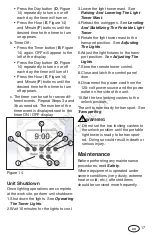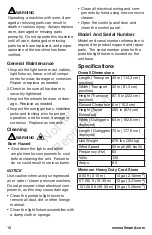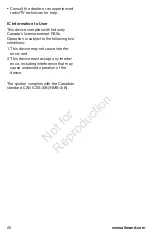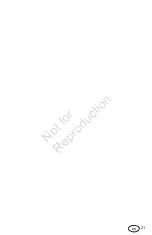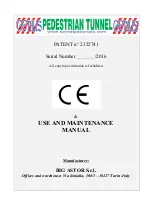
19
en
Troubleshooting
Before performing any troubleshooting
procedures, read
Safety
.
Troubleshooting Chart
Problem
Possible Cause
Lights not
working
No power. Make sure
power cord is connected
between unit and 120-
volt supply.
Main breaker off. Turn on
main breaker.
No light (one
or more
lights)
Light switch(es) off. Turn
on light switch(es).
Photocell /
Timer and
Manual
control not
working
Light Operation Mode
not set correctly. See
Light Operation Mode
.
Photocell
stays on or
does not
function
properly
Too little ambient light.
Make sure that noth-
ing is blocking pho-
tocell. See
Photocell
Operation
. Or switch to
Timer or Manual control.
Low voltage. Power
cord gauge too small or
length too long.
Photocell
stays off or
does not
function
properly
Too much ambient light.
Move away from light,
or switch to Timer or
Manual control.
Unit not
working
Unit malfunction. Contact
authorized dealer.
FCC and IC Compliance
Statement
FCC Part 15 Information To User
Pursuant to part 15.21 of the FCC
Rules, you are cautioned that changes
or modifications to the product not
expressly approved by Briggs &
Stratton could void your authority to
operate the product.
This device complies with part 15 of the
FCC Rules.
Operation is subject to the following
two conditions: (1) This device may not
cause harmful interference, and (2) this
device must accept any interference
received, including interference that
may cause undesired operation.
This equipment has been tested and
found to comply with the limits for a
Class B digital device, pursuant to part
15 of the FCC Rules. These limits are
designed to provide reasonable pro-
tection against harmful interference in
a residential installation. This equip-
ment generates, uses and can radi-
ate radio frequency energy and, if not
installed and used in accordance with
the instructions, may cause harmful
interference to radio communications.
However, there is no guarantee that
interference will not occur in a particu-
lar installation. If this equipment does
cause harmful interference to radio
or television reception, which can be
determined by turning the equipment
off and on, the user is encouraged to
try to correct the interference by one or
more of the following measures:
• Reorient or relocate the receiving
antenna.
• Increase the separation between the
equipment and receiver.
• Connect the equipment into an out-
let on a circuit different from that to
which the receiver is connected.
Not for
Reproduction













